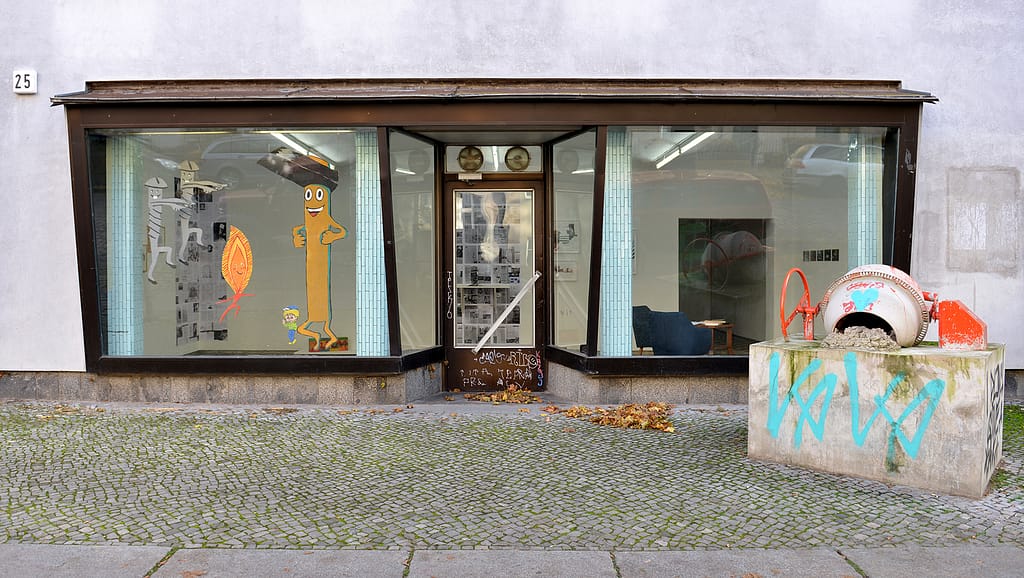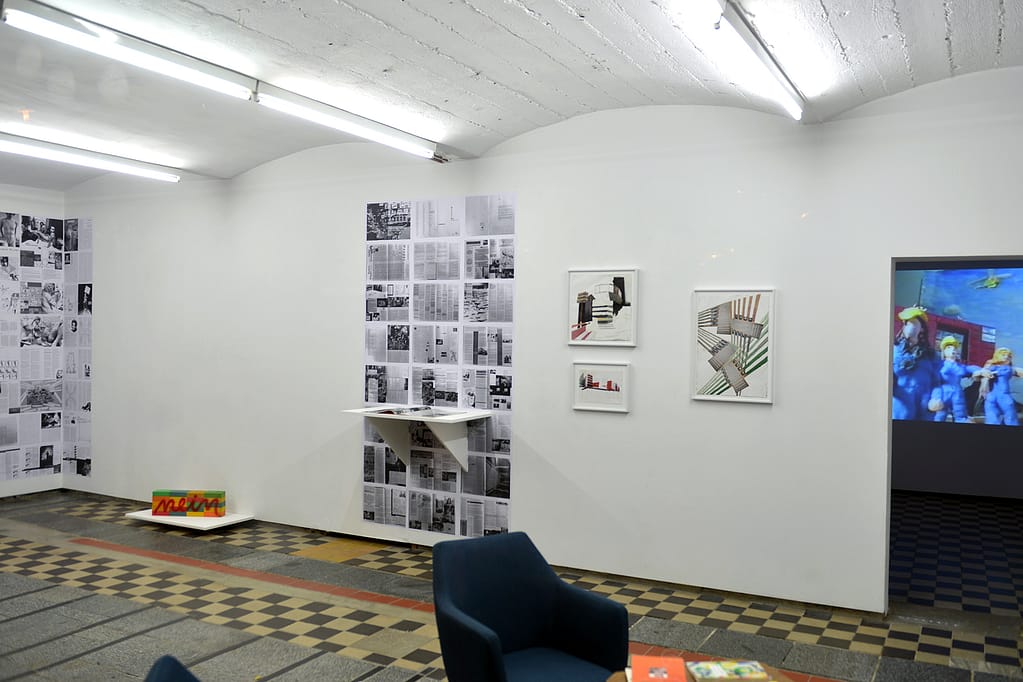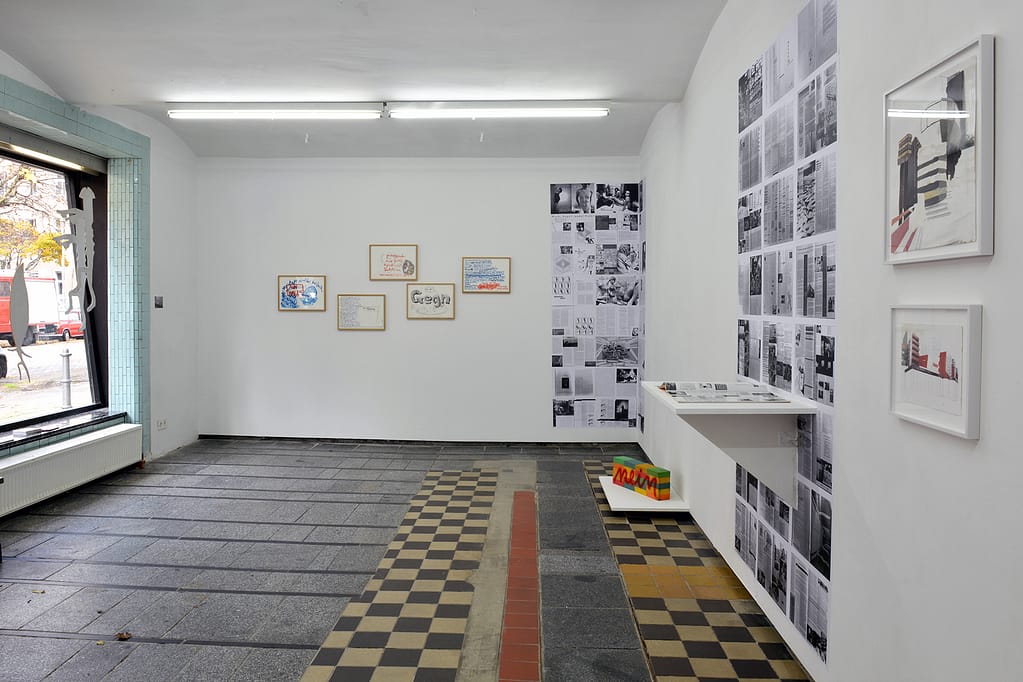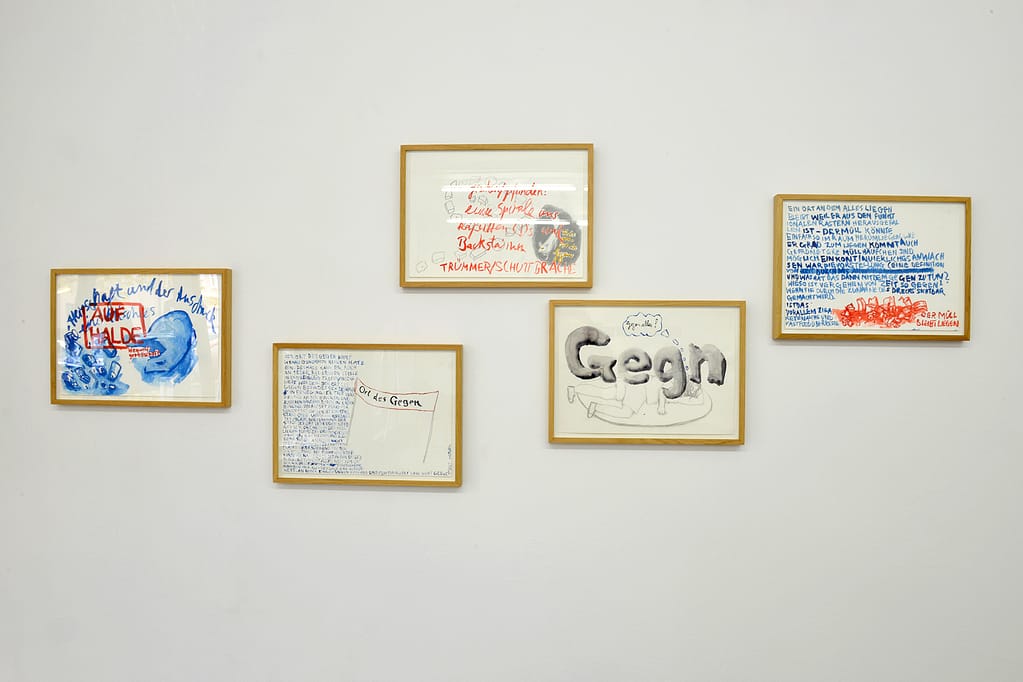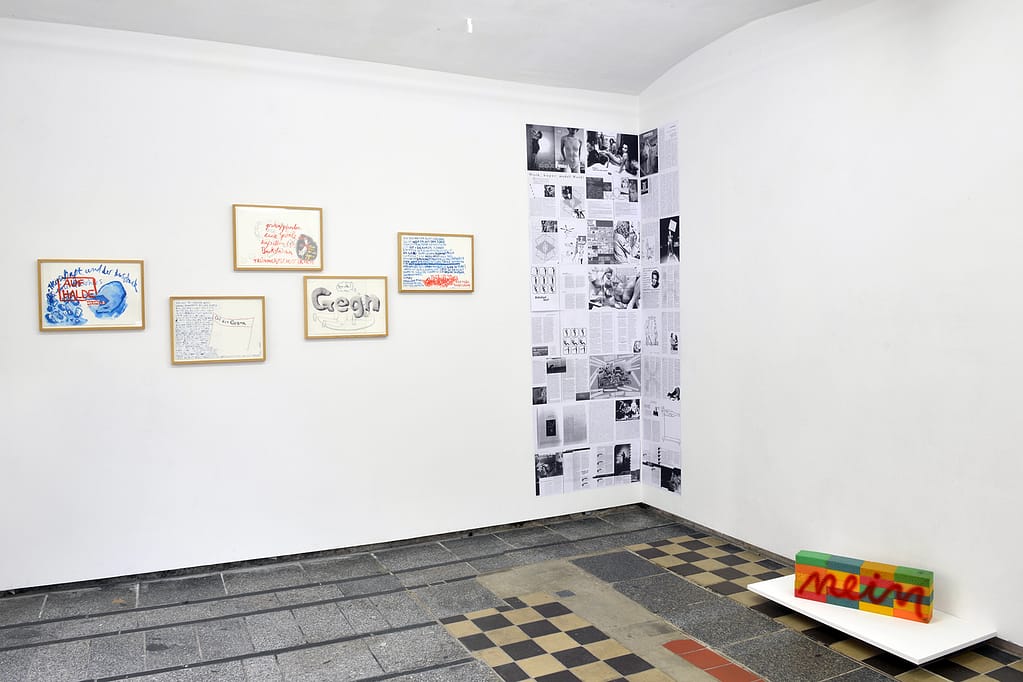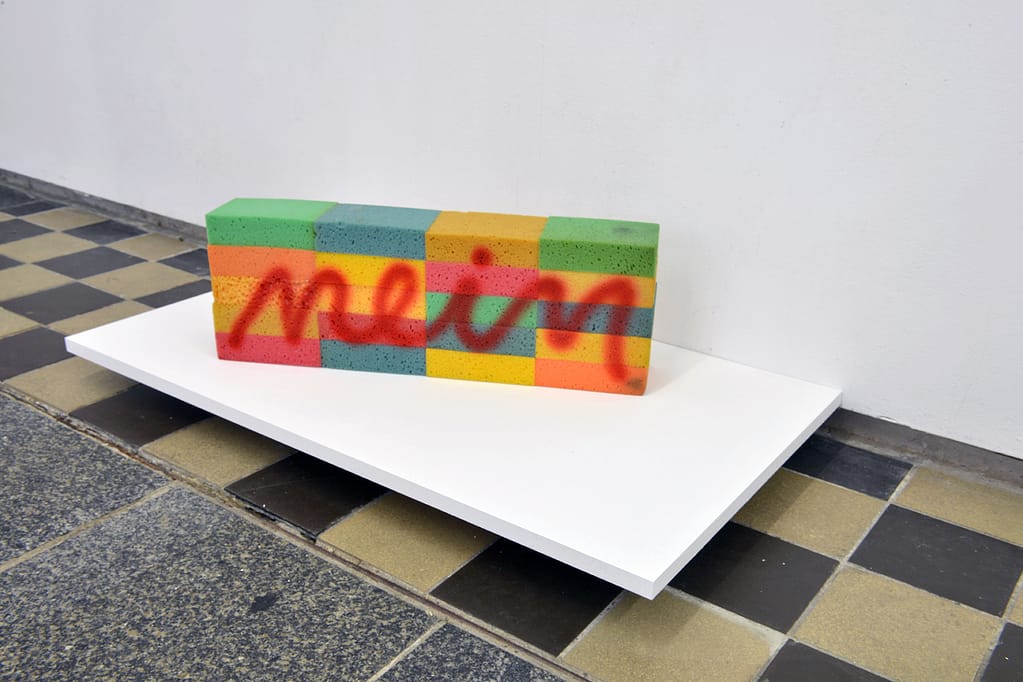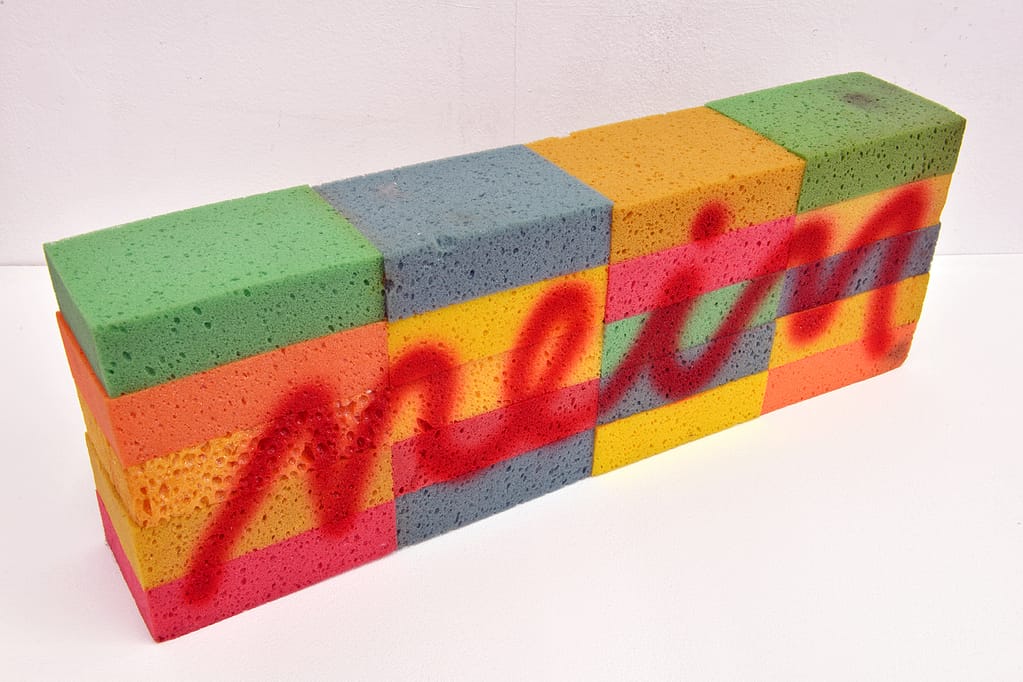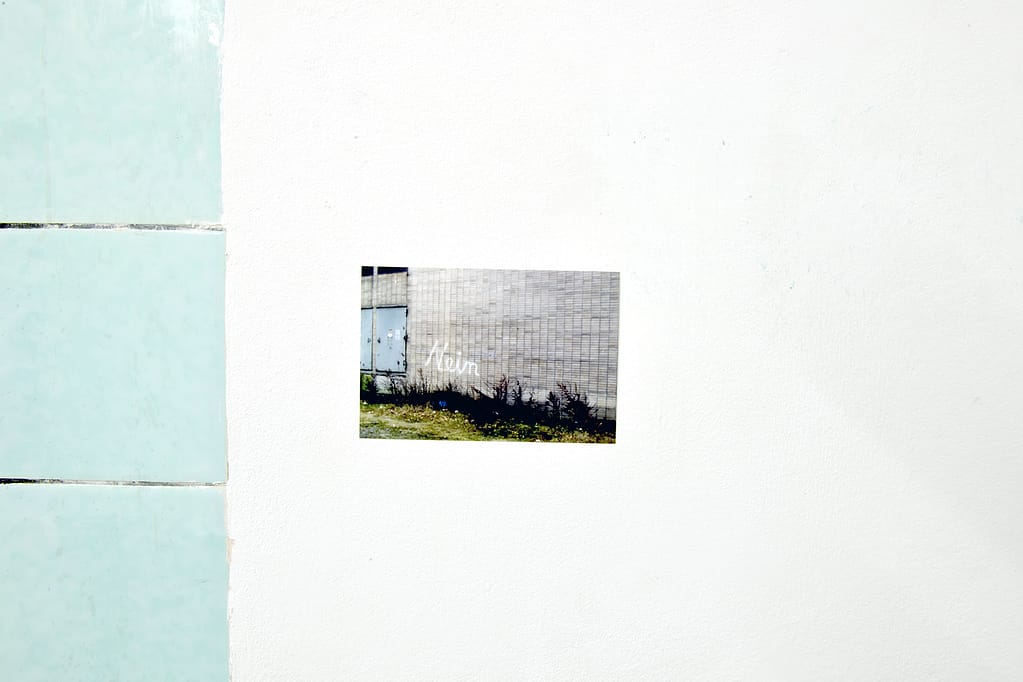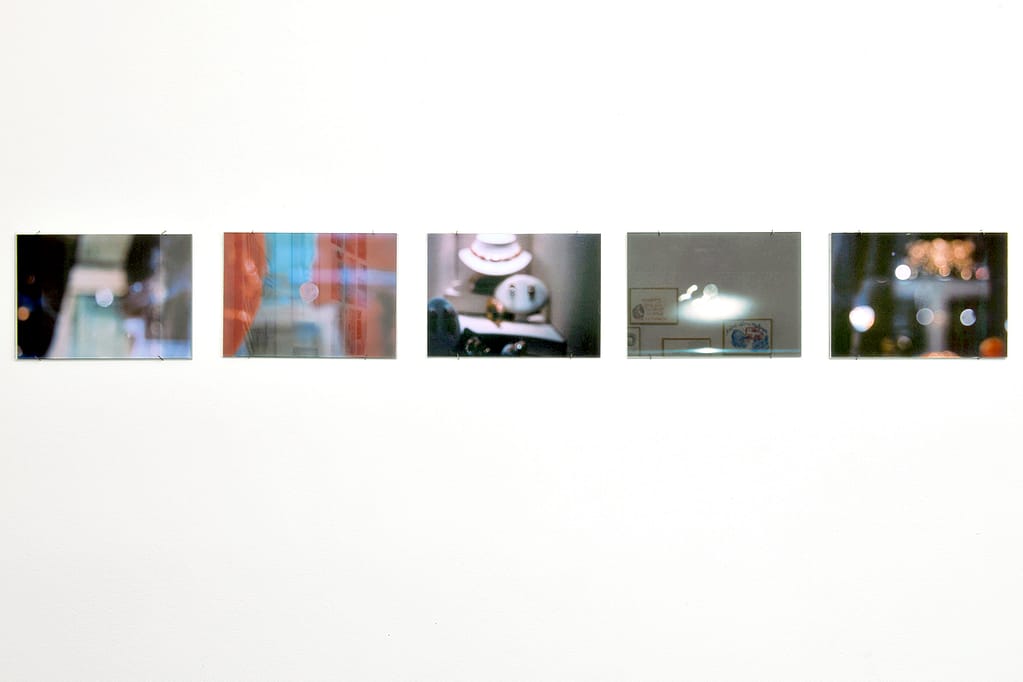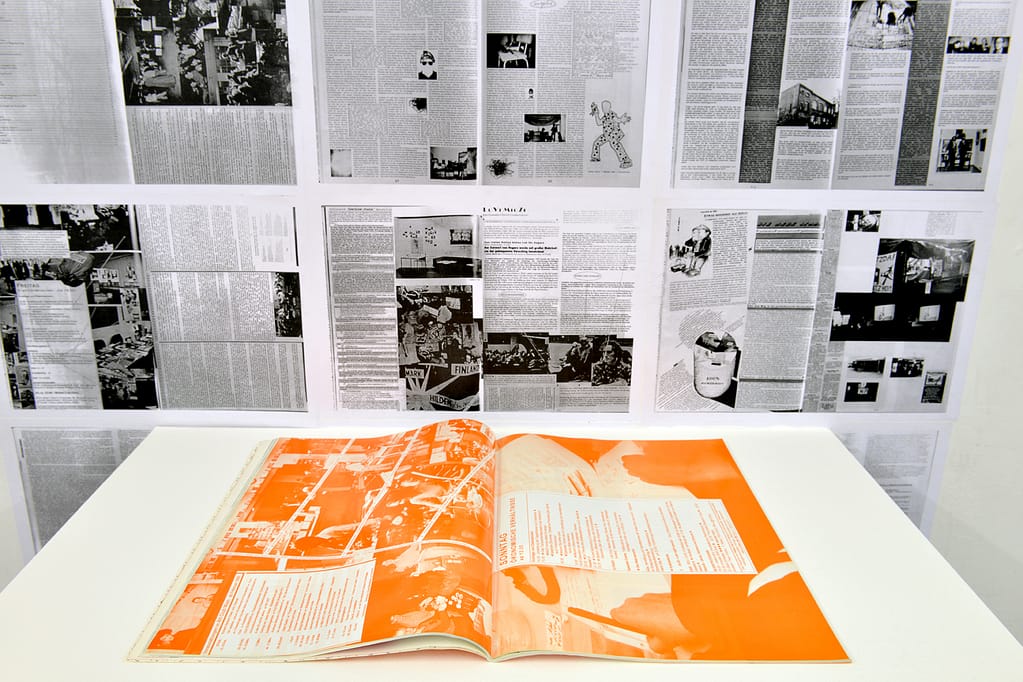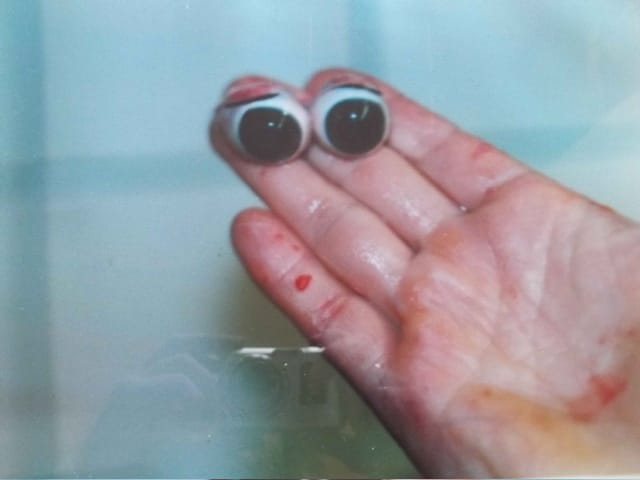November 20, 2020 – March 7, 2021
artists: A-Clip, Gruppe Gummi K / MicroStudio Surplus (Alice Creischer, Martin Ebner, Christoph Keller, Ariane Müller, Andreas Siekmann, Nicolas Siepen, Josef Strau, Klaus Weber, Amelie von Wulffen), Jaaaa & Protzband Nicolas Siepen, Siegfried Koepf & Martin Ebner & Gunter Reski, Josef Kramhöller, NEID, Annette Wehrmann, Ina Wudtke, Amelie von Wulffen and others.
On Thursday February 18, 7 p.m. KW Institute for Contemporary Art, Berlin and after the butcher invite you to an Onlinetalk about the exhibition. Speakers are: Annette Maechtel, Thomas Kilpper, Ina Wudtke and Kathrin Bentele.
Exhibition: November 20, 2020 – March 7, 2021. Due to the current lockdown and until further notice, the exhibition can only be visited online: videowalk through the exhibition.
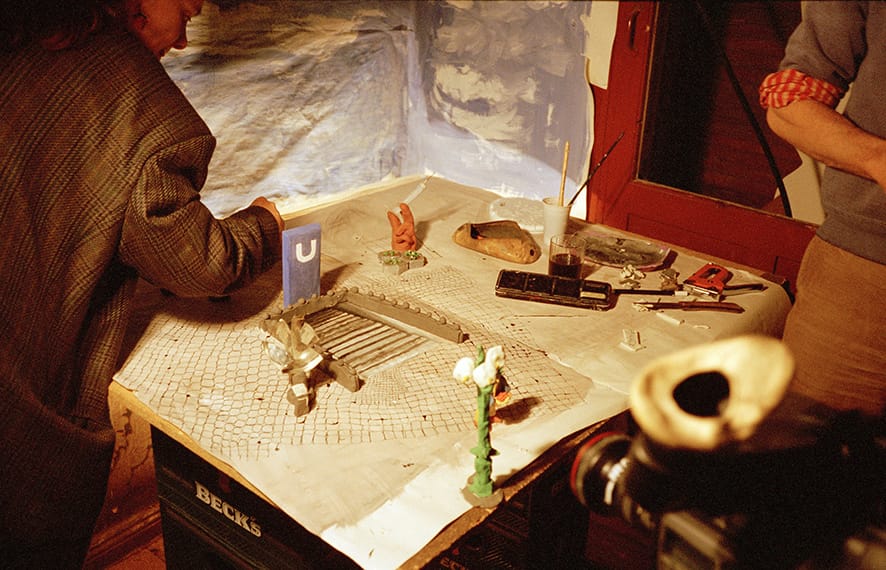
after the butcher presents the group exhibition Stadt und Knete. Positionen der 1990er Jahre, running in parallel with the solo exhibition by Amelie von Wulffen at KW Institute for Contemporary Art, Berlin. A collaboration between KW and after the butcher, the show revolves around four collaboratively produced animation films: Infobox (1996), Wie eins zum anderen kam (1996), and Die Krumme Pranke and Egoland (both 1997). The work Infobox by the Berlin artists’ group Jaaaa & Protzband Nicolas Siepen, Siegfried Koepf & Martin Ebner & Gunter Reski, MicroStudio Surplus reads as a commentary of its time on the structural development of Potsdamer Platz in Berlin. The work also refers to the so-called “Infobox” pavillion, which was installed from 1995 to 2001 at Leipziger Platz.
In 1996, the group Gummi K / MicroStudio Surplus produced the video work Wie eins zum anderen kam, which vitriolicly and ironically criticizes the major exhibition Nach Weimar at the Neues Museum Weimar, organized by Klaus Biesenbach and Nicolaus Schafhausen. The work addresses the structural relationships between the Neues Museum and the Gauforum, with the latter being built in the National Socialist era, as well as the resulting legitimization of fascist architecture as an exhibition space for contemporary art.
Die krumme Pranke, a video work by Alice Creischer, Andreas Siekmann, Josef Strau and Amelie von Wulffen performs in the lineage of the classic Derrick crime-series. Situated in Berlin, the visual vocabulary of this metropolitan thriller moves between documentary shots and fictional animation. Domestic politics and the development areas of the 1990s act as central motifs of this filmic montage, in which the artists shift from art practice to political activism and reverse.
Egoland from 1997, is a 55-second cinema spot from the A-Clip series. Collectively produced, the political messages of the A-Clips were first inserted by various cinema projectionists in Berlin in the commercial breaks before the main film.
Taking place in 1997 and 1998 in different cities in Germany and in Switzerland the “Innenstadtaktionen” were activities organized with significant participation by political activists from the art context. Katja Eydel, who was also participating, documented some of the Berlin actions at the time. For the exhibition, Ina Wudtke has put together the video Innenstadtaktionen (2020), consisting of Eydel’s photographs and new fragments of interviews with artists formerly involved in the activities. Kollektive Erinnerungen (collective memories) thus gives insight into the political context of the time in Berlin and is a significant testimony of the art production connected to it.
Hamburg based artist Annette Wehrmann (1961–2010) worked on a long-term project that explored urban space, titled Ort des Gegen. It followed the idea that the quality of a city depends on the number of undeveloped, freely available areas. She concluded that, under neoliberal conditions, the “Ort des Gegen” is able “to take the form of a thorough refusal of exploitation”. It becomes the “flipside” of utopia, “a place, where waste sediments and is not being disposed” (from Annette Wehrmann’s text Ort des Gegen, 2002). The exhibition includes five gouaches from the series as well as the foam sculpture Nein.
As one of the first to publish Annette Wehrmann’s Luftschlangentexte, the artist magazine NEID (1992–2004) also documented fragments of the “Innenstadtaktionen” in Berlin. The exhibition features issues of NEID #4 and NEID #7.
Further, Stadt und Knete presents a series of photographs depicting fingerprints on window fronts of luxury boutiques from 1995 by Josef Kramhöller (1968–2000).
Alongside Amelie von Wulffen’s collaboratively produced video works, the exhibition presents three photo collages depicting buildings in East Berlin reflecting her enthusiasm for the Soviet modernism and the remaining parts of a shop window installation from 1996. The plywood figures depict both found and invented logos of manual craft’s companies.
About the artists:
A-Clip, are political short films collectively produced by artists and activists for the cinema, in 1997 and 2000.
Jaaaa (Josef Strau, Amelie von Wulfen, Ariane Müller, Alice Creischer, Andreas Siekmann) was founded in 1996 in Berlin to collaboratively produce animation videos.
Gruppe Gummi K (Alice Creischer, Martin Ebner, Christoph Keller, Ariane Müller, Andreas Siekmann, Nicolas Siepen, Josef Strau, Klaus Weber, Amelie von Wulffen) emerged from the group Jaaaa in 1997 and continued working on video animations.
Josef Kramhöller (1968–2000) was an artist and author. He studied painting at the Akademie der Bildenden Künste in Munich and at the Chelsea College of Art and Design in London. His practice spanned performance, photography, painting, drawing, and text.
MicroStudio Surplus was the name for a temporary studio in Burgstrasse, Berlin. It does not denote a fixed constellation of participants.
NEID was a queer-feminist magazine founded in 1992 by Hans-Christian Dany, Claudia Reinhardt, Heiko Wichmann, and Ina Wudtke at the Hamburg Academy of Fine Arts. It was published by Ina Wudtke from 1995–2004.
Annette Wehrmann (1962–2010) was an artist and author. She studied Fine Arts at the Academy of Fine Arts in Hamburg and at Städelschule in Frankfurt. Her work revolved around topics of urban space and forms of self-organisation.
Ina Wudtke, born 1968, is a conceptual artist living and working in Berlin. Her artist’s book The Fine Art of Living, which addresses issues of gentrification, was published in 2018 by Archive Books, Berlin.
Amelie von Wulffen, born 1966, lives and works in Berlin, studied at the Academy of Fine Arts in Munich. Her practice entails painting, collage, drawing, and installation. She was represented at the 50th Venice Biennale and Manifesta 5.
Funded by:

after the butcher would like to thank the Kienzle Art Foundation for the kind loan of Josef Kramhöller’s photographic works.
